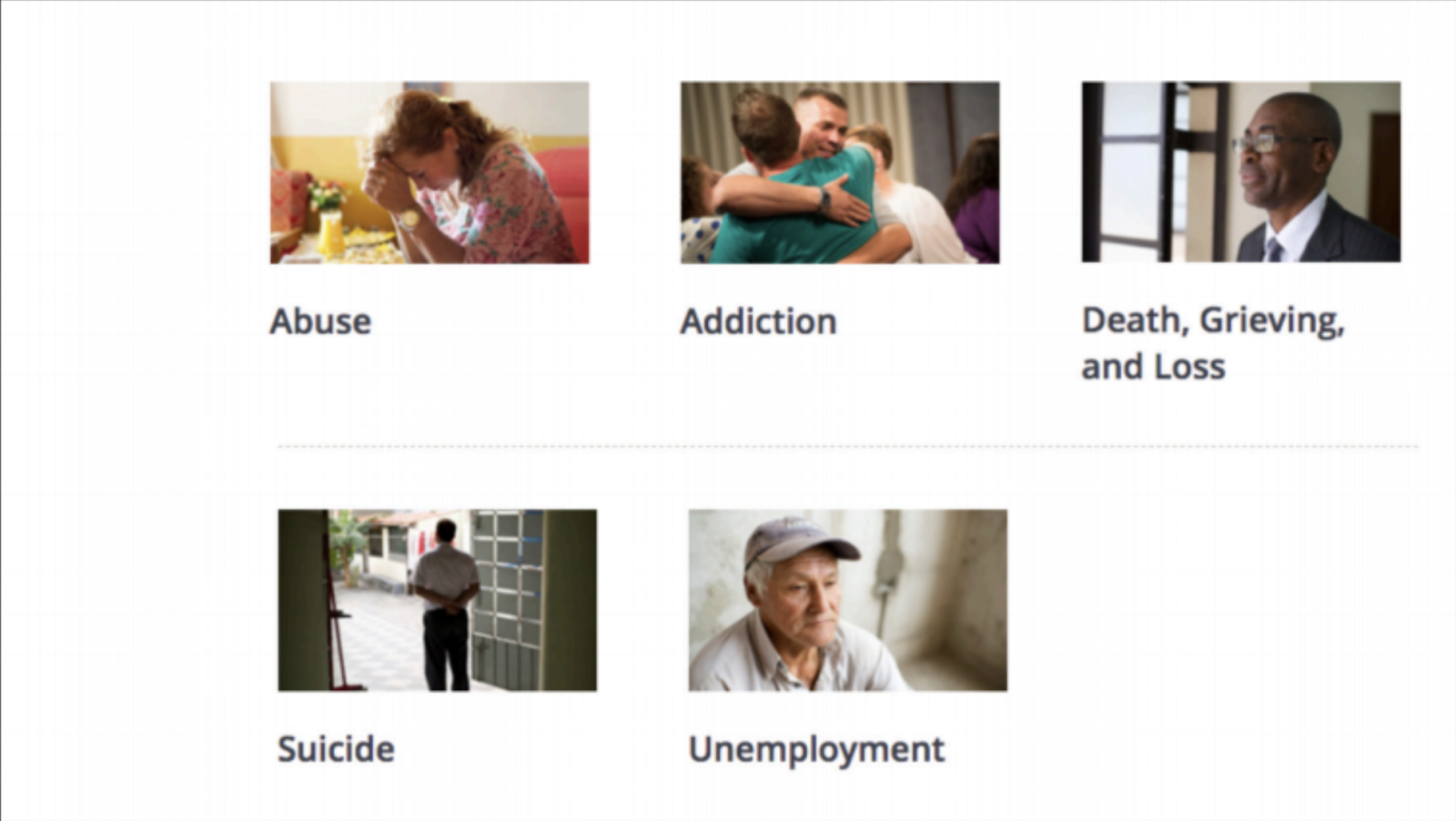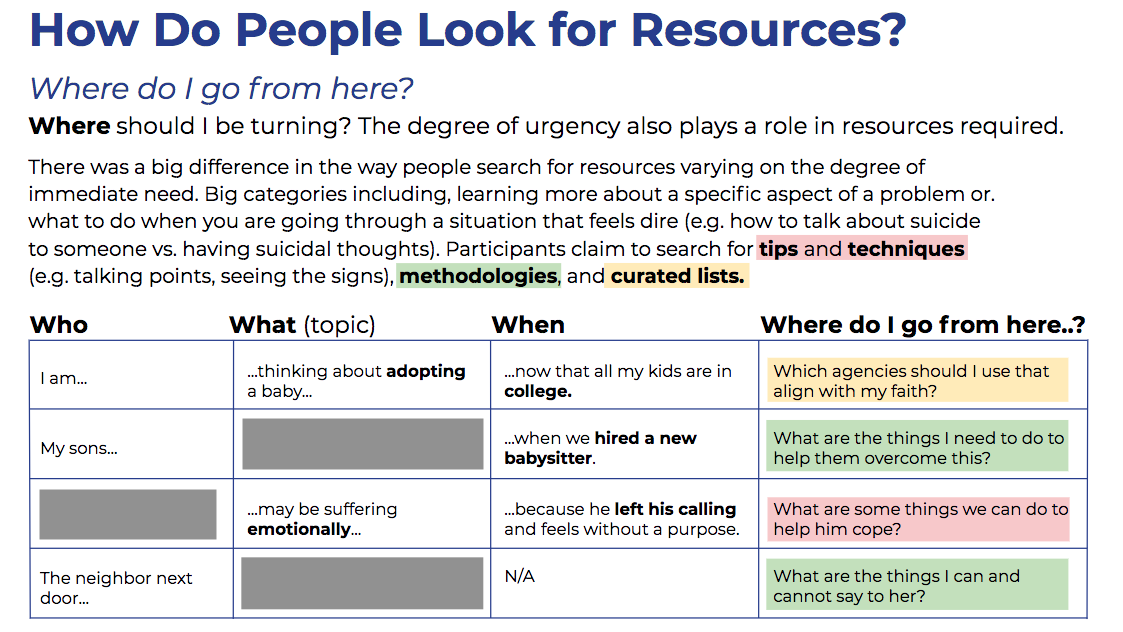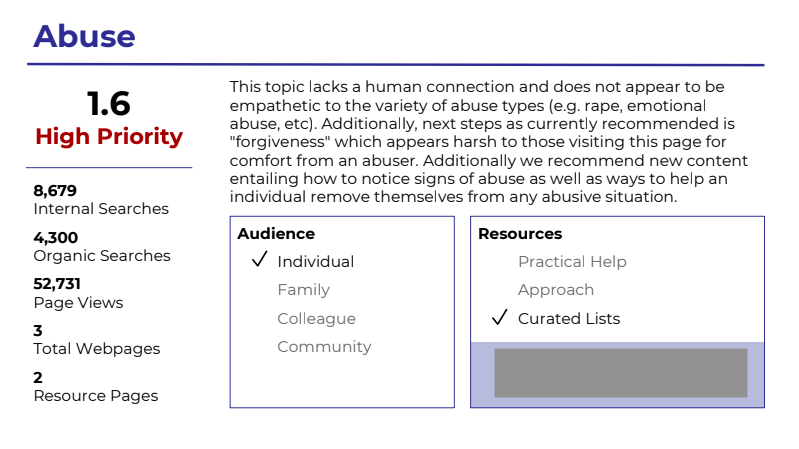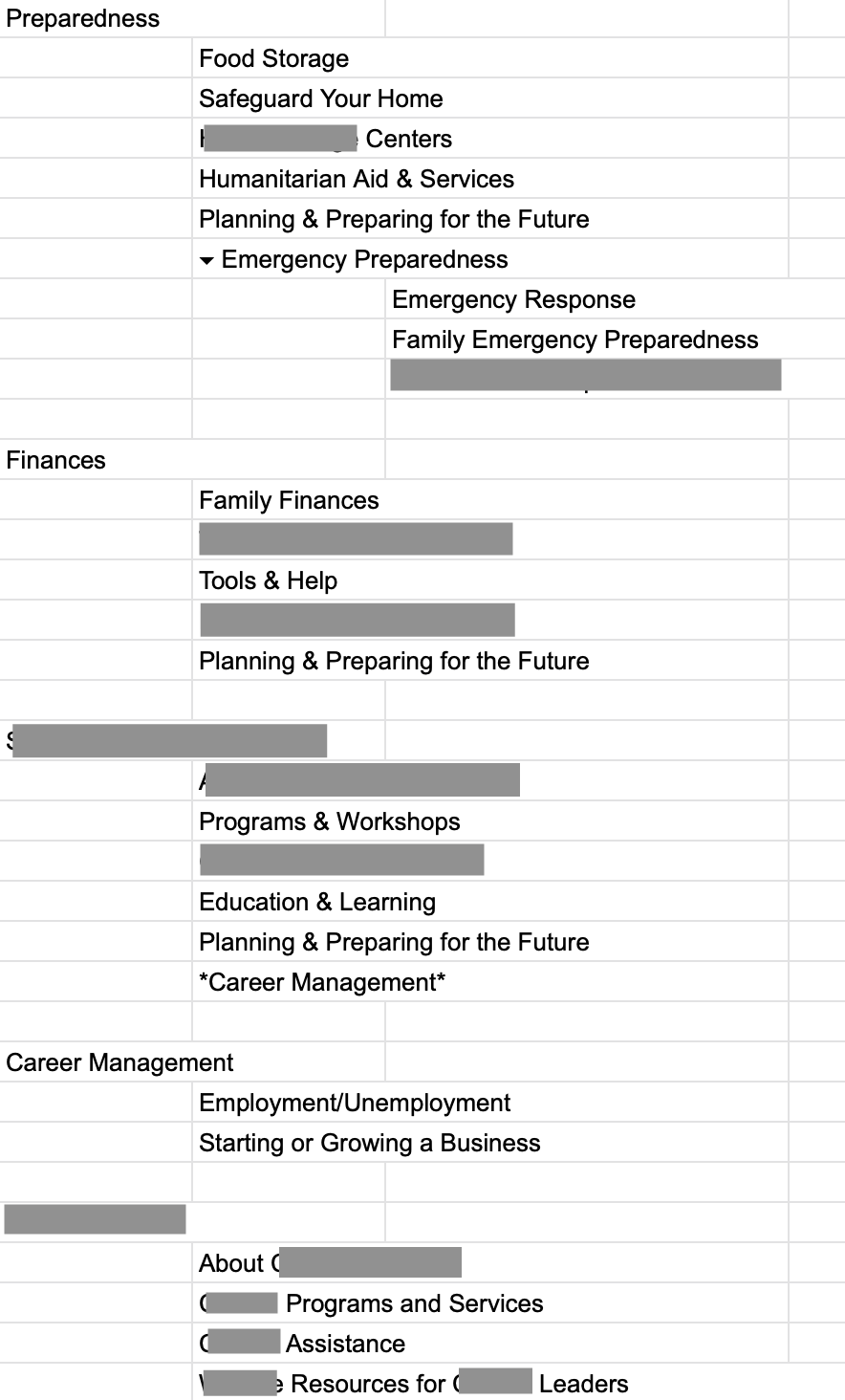UNDISCLOSED INTERNATIONAL HUMANITARIAN SERVICES ORGANIZATION
Background
Challenge
1,200 unique pages of content spread across four different websites
Audience(s)
People in North America who are looking for help through difficult situations; i.e. abusive relationships, addiction, unemployment, and mental health challenges.
Priorities
Ensuring resources are accessible to the general public
Applying the correct tone of voice across content
Ensuring the content was actually helpful to the audiences that were reading it
Locating gaps in their content that would be useful to site visitors
How my skills were helpful
Internal staff was duplicating content and external audiences were having a hard time finding the content they needed due to the large number of resources. The client was unsure if the content they were producing was impactful and they wanted to make every page more consistent and useful.
Approach
Mapping the Current State
We started with interviews with twelve key internal stakeholders across various teams to learn about their needs, requirements, and goals for the content in these topic areas. The organization also had a large amount of past data – from detailed analytics, to search logs, and past qualitative research – so we dove into that and re-summarized it for the needs of this project. We also developed a detailed content inventory and a comprehensive list of tasks that audiences would come to the site to complete.
Content Optimization
Given a large amount of content and topics covered, we led the internal teams through a workshopping exercise to prioritize content to evaluate and rewrite. We uncovered content gaps through internal and organic search term analysis and mapped them out for all teams to align on.
We conducted user research through both interviews and card sorting. Combining these two approaches allowed us to create comprehensive content requirements that covered everything from tone of voice to labeling and organization of the content.
Putting Everything in Place
We put all of the data together into a final new site map that consolidated all of the resources together in one place and added in previously missed topics. The resulting organization schedule included labels that were proven to be understandable to the target audience. We created a document outlining where all content would go in the new hierarchy. Based on the content requirements developed in the Content Optimization state, we then reviewed and evaluated all existing content and produced a detailed scorecard for each topic area, including notes on areas for improvement.
Outcomes
Reduce the total number of websites from four to one.
Removal of 200 pages of redundant or outdated content.
Identification of the content needs that weren’t being addressed by the internal teams previously.
Assembly of a wealth of user information to be used in future decision-making, including content creation requirements and a recommended site map for their newly condensed content.
Creation of a quantitative method for content rating to ensure a high quality of resources offered moving forward.






